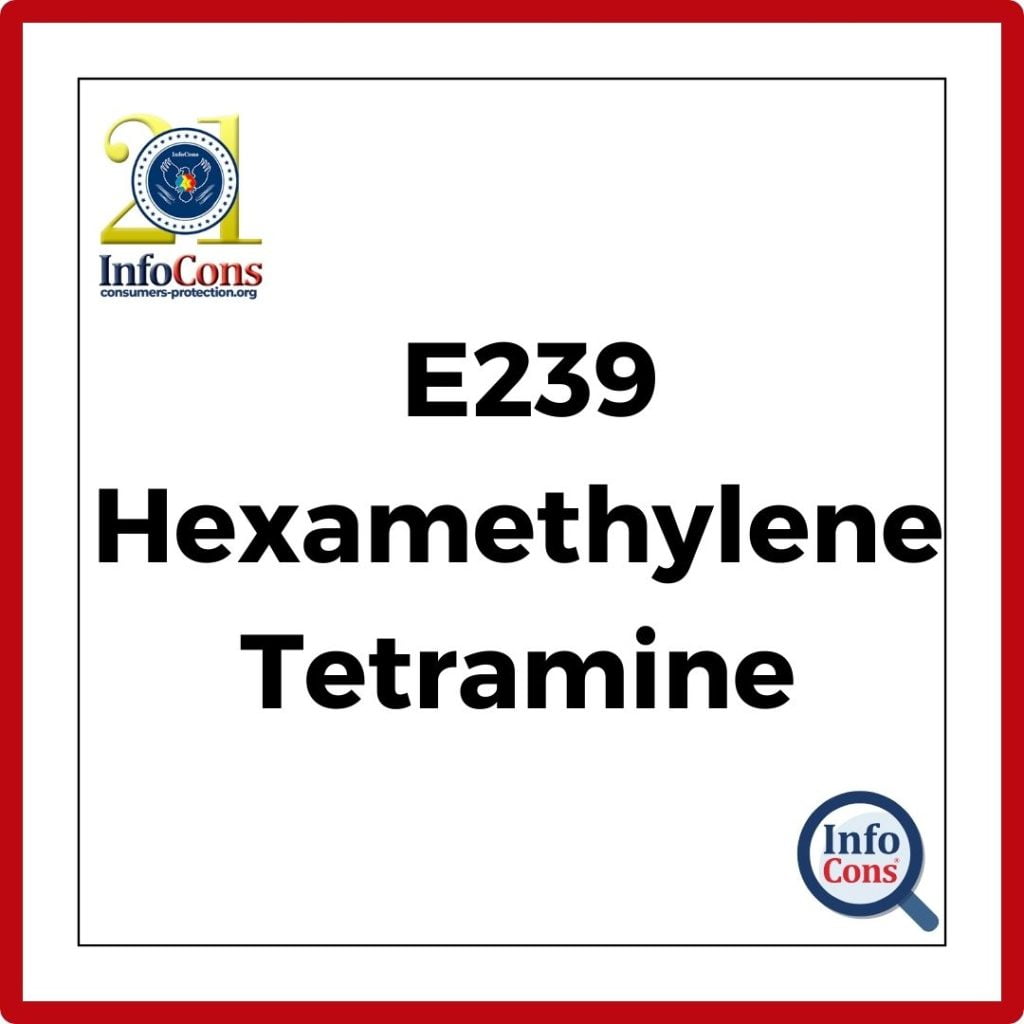What is Food Additive E239 ?
Food additives have become an integral part of modern food processing, ensuring longer shelf life, improved taste, and a more attractive appearance for various products. One such additive is E239, scientifically known as Hexamethylenetetramine. This food additive falls into the category of chemical preservatives, obtained from formaldehyde and ammonia, and is used for its preservative properties, particularly in certain cheeses and fish products.
E239 is a white crystalline substance that is highly soluble in water and organic solvents. Due to its chemical structure, it serves multiple purposes beyond food preservation, including applications in medicine.
Do You Know What Food Additives are ? InfoCons Consumer Protection Informs You !
What is the Recommended Daily Dose ?
The regulatory status of food additive E239 varies globally. In the European Union, its use is permitted but strictly regulated to ensure consumer safety. The European Food Safety Authority (EFSA) monitors and evaluates the safety of food additives, including E239, to provide guidelines on acceptable daily intake levels.
The recommended daily dose has been established by EFSA at 0.15 mg/kg body weight/day.
In Which Products is Additive E239 Found ? InfoCons Consumer Protection Informs You !
The primary use of E239 in the food industry is as a preservative. Its antimicrobial properties make it effective in inhibiting the growth of bacteria and fungi, thereby extending the shelf life of perishable items. Commonly, it is used in:
- Cheeses: Some cheeses use E239 to prevent spoilage.
- Fish Products: Certain fish products benefit from the preservative qualities of E239 to maintain freshness and prevent microbial growth.
Read also : Pay attention to Alerts for food products with the European InfoCons App ! InfoCons Consumer Protection Informs You !
Contraindications and Risks
Like many food additives, E239 is not without controversy. Concerns have been raised regarding its safety, particularly with long-term consumption. Some of the risks associated with E 239 include:
- Formaldehyde Release: E239 can decompose to release formaldehyde, a known carcinogen, under certain conditions. This has led to concerns about its safety in food products.
- Allergic Reactions: Some individuals may experience allergic reactions to E239, including skin rashes and gastrointestinal discomfort.
In conclusion, E239 plays a significant role in food preservation, contributing to the extended shelf life and safety of various products. However, its use is not without risks, necessitating careful regulation and monitoring. As consumers become more health-conscious and regulatory bodies continue to scrutinize food additives, the incorporation of E239 in the food industry remains a subject of ongoing research and debate.
Download the InfoCons application !
Look for products that have a cleaner label or use natural additives. By installing Consumer Protection InfoCons App and scanning the barcodes of food products, you can find out the number and type of food additives they contain.
Author – Cosmina Nițu
Master in Nutrition – Infant and new born nutrition
Sources:
https://www.efsa.europa.eu/en/ – European Food Safety Authority (EFSA)
InfoCons – European Organization for Consumers Protection and Promotion of Programs and Strategies , a full member of the World Organization Consumers International, founding member of the Federation of Consumer Associations, and member of ANEC.
